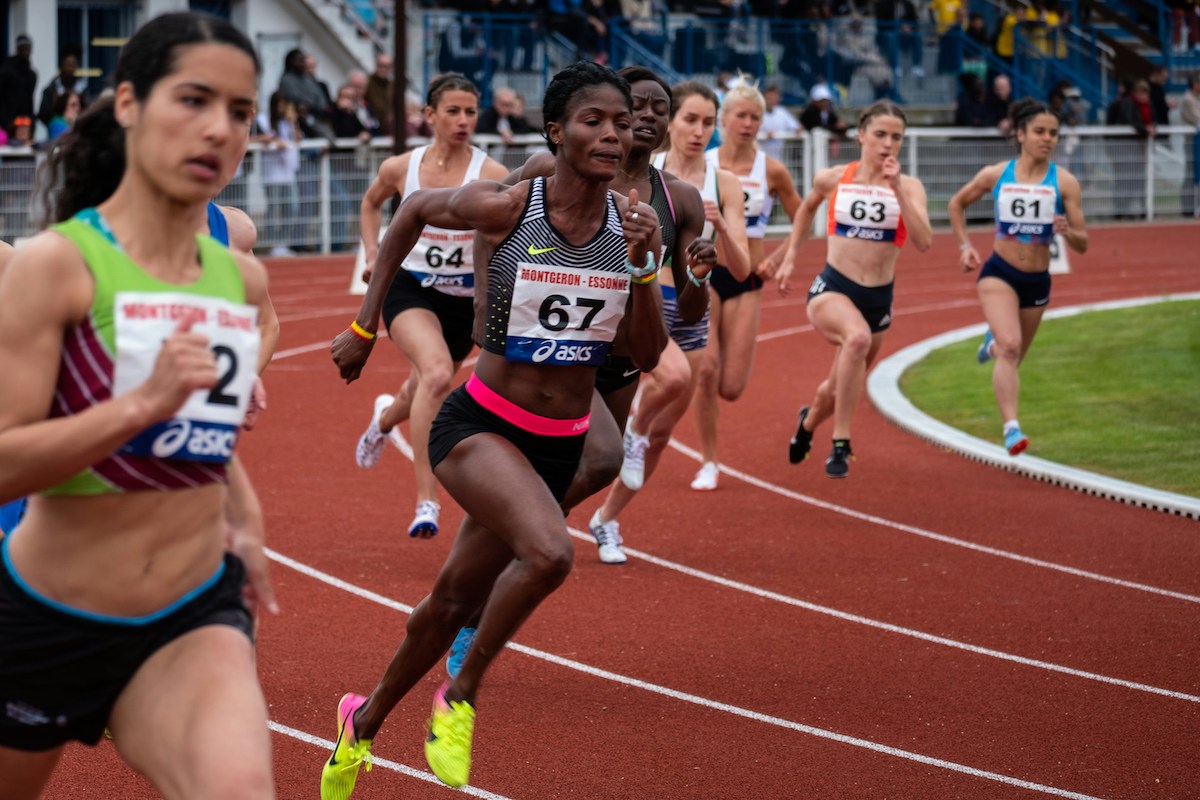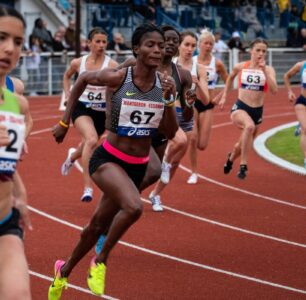Understanding the intricacies of muscle physiology is paramount for athletes, fitness enthusiasts, and healthcare professionals alike. One fundamental aspect of muscle function is the diversity of muscle fiber types present in the human body. In this comprehensive essay, we delve into five essential facts about different muscle fiber types, shedding light on their characteristics, functions, and implications for exercise performance and training strategies.
1. Classification of Muscle Fibers
Muscle fibers are broadly classified into two main types: slow-twitch (Type I) and fast-twitch (Type II) fibers. Slow-twitch fibers are characterized by their endurance-oriented properties, while fast-twitch fibers are associated with high-force, rapid movements. Within these categories, further subtypes exist, adding nuance to the understanding of muscle physiology.
2. Characteristics of Slow-Twitch Fibers
Slow-twitch fibers, also known as Type I fibers, are like the marathon runners of your muscle fibers. They are built for the long haul, excelling in activities that require endurance and stamina. Here’s why:
- High Oxidative Capacity: Slow-twitch fibers are equipped with plenty of tiny powerhouses called mitochondria, which are like miniature factories that produce energy using oxygen. This high oxidative capacity allows slow-twitch fibers to sustain prolonged activity without tiring quickly.
- Resistance to Fatigue: Imagine a light bulb that never burns out—slow-twitch fibers are similar. They have remarkable endurance capabilities, making them resistant to fatigue even during extended periods of activity. This endurance makes them perfect for activities like long-distance running, cycling, and swimming, where sustaining effort over an extended duration is essential.
- Aerobic Metabolism: Slow-twitch fibers primarily rely on aerobic metabolism, a process that uses oxygen to break down carbohydrates and fats to produce energy. This reliance on aerobic pathways means that they are well-suited for activities that require steady, continuous effort, such as jogging or hiking.

3. Characteristics of Fast-Twitch Fibers
Contrary to slow-twitch fibers, fast-twitch fibers (Type II) exhibit low oxidative capacity and fatigue more readily. However, they possess a higher glycolytic capacity, enabling rapid ATP production through anaerobic metabolism. Fast-twitch fibers are further divided into Type IIa and Type IIb subtypes, each with distinct properties. Type IIa fibers possess intermediate characteristics between Type I and Type IIb fibers, while Type IIb fibers, also known as fast-glycolytic fibers, excel in generating rapid bursts of power.
Here’s what sets them apart:
- Low Oxidative Capacity: Fast-twitch fibers have fewer mitochondria compared to slow-twitch fibers, which means they rely more on anaerobic metabolism—a process that doesn’t require oxygen—for energy production. This allows them to generate quick bursts of power but also makes them more prone to fatigue.
- High Glycolytic Capacity: Instead of relying on oxygen, fast-twitch fibers are adept at utilizing glycogen—a stored form of glucose—for rapid energy production through anaerobic glycolysis. This high glycolytic capacity enables them to produce energy rapidly but only for short durations.
- Variability in Subtypes: Fast-twitch fibers are further divided into Type IIa and Type IIb subtypes. Type IIa fibers have characteristics intermediate between slow-twitch and fast-twitch fibers, making them versatile for activities that require both endurance and power, such as middle-distance running or cycling. On the other hand, Type IIb fibers, also known as fast-glycolytic fibers, excel in generating rapid bursts of power but fatigue quickly, making them ideal for activities like sprinting or weightlifting.
Understanding the distinct characteristics of slow-twitch and fast-twitch fibers helps explain why certain activities are better suited to one fiber type over the other. Endurance activities, such as long-distance running, rely heavily on slow-twitch fibers due to their endurance-oriented properties and reliance on aerobic metabolism. In contrast, activities requiring explosive power, like sprinting or weightlifting, heavily recruit fast-twitch fibers due to their ability to generate quick bursts of energy through anaerobic glycolysis. By tailoring training programs to target specific muscle fiber types, athletes can optimize their performance and achieve their fitness goals more effectively.

4. Distribution and Adaptation
The distribution of muscle fiber types varies among individuals and is influenced by factors such as genetics, training history, and specific physiological demands. Endurance athletes typically exhibit a higher proportion of slow-twitch fibers, whereas power athletes display a prevalence of fast-twitch fibers. Moreover, muscle fibers demonstrate remarkable plasticity in response to training stimuli. Endurance training promotes the conversion of fast-twitch fibers to a more oxidative phenotype, enhancing endurance capacity, while resistance training stimulates hypertrophy and increased force production in fast-twitch fibers.
The range of diversity of muscle fibers in a given athlete is influenced by various factors, including genetics, training history, and specific physiological demands. Here’s a breakdown of these key determinants:
- Genetics: An athlete’s genetic makeup plays a significant role in determining their muscle fiber composition. Some individuals may inherit a higher proportion of slow-twitch fibers, making them naturally more suited for endurance activities like long-distance running or cycling. In contrast, others may possess a greater abundance of fast-twitch fibers, predisposing them to excel in explosive, power-based sports such as sprinting or weightlifting. Genetic predispositions can vary widely among individuals and can significantly impact athletic performance and specialization.
- Training History: The type and intensity of training an athlete undergoes can also influence their muscle fiber composition. Endurance training, characterized by long-duration, low-to-moderate intensity activities, promotes the development of slow-twitch fibers and enhances aerobic capacity. Conversely, resistance training, which involves high-intensity, short-duration exercises targeting muscle strength and power, stimulates hypertrophy (muscle growth) and increases the proportion of fast-twitch fibers. Athletes who engage in specific training modalities over time may experience adaptations in muscle fiber composition that align with the demands of their chosen sport or activity.
- Physiological Demands: The specific physiological demands of an athlete’s sport or activity can shape the distribution of muscle fiber types in their musculature. For example, endurance athletes who participate in sports like distance running or cycling typically exhibit a higher proportion of slow-twitch fibers to support sustained aerobic efforts. In contrast, power athletes involved in activities such as sprinting or weightlifting often possess a greater abundance of fast-twitch fibers to generate explosive bursts of strength and speed. The demands placed on muscles during training and competition influence the adaptive responses that occur, leading to alterations in muscle fiber composition to meet performance requirements.
5. Implications for Training and Performance
Understanding the composition of muscle fiber types is crucial for optimizing training programs and enhancing athletic performance. Tailoring exercise regimens to target specific fiber types can yield significant improvements in strength, endurance, and overall fitness. Endurance athletes may benefit from high-volume, low-intensity training to enhance mitochondrial density and aerobic capacity, while power athletes may prioritize explosive, high-intensity exercises to maximize fast-twitch fiber recruitment and muscle power.
While genetics play a significant role in establishing the initial composition of muscle fibers in an individual, it’s important to note that muscle fiber makeup is not entirely fixed at birth. While some aspects of muscle fiber distribution may be predetermined by genetic factors, there is considerable plasticity in muscle tissue throughout life, allowing for adaptations in response to various stimuli, including exercise and training.
Here’s how muscle fiber composition can be influenced and potentially altered over time:
- Training: One of the most potent stimuli for modifying muscle fiber composition is exercise training. Endurance training, characterized by activities such as long-distance running or cycling, can promote an increase in slow-twitch (Type I) muscle fibers and enhance aerobic capacity. Conversely, resistance training, which involves lifting weights or performing high-intensity exercises, can stimulate hypertrophy (muscle growth) and increase the proportion of fast-twitch (Type II) fibers, particularly Type IIa and IIb subtypes. These adaptations occur through a process known as muscle fiber remodeling, where existing fibers change in size and metabolic properties in response to training stimuli.
- Physical Activity Levels: Even without structured training, regular physical activity can influence muscle fiber composition to some extent. Individuals who engage in consistent physical activity, whether through sports, recreational activities, or daily movement, may experience adaptations in muscle fiber types over time. While the magnitude of these changes may be less pronounced compared to structured training programs, consistent physical activity can still contribute to improvements in muscle function and overall health.
- Age: Muscle fiber composition can also undergo changes with age, although the extent of these changes varies among individuals. With advancing age, there is a gradual decline in muscle mass and strength, a phenomenon known as sarcopenia. This decline may be accompanied by alterations in muscle fiber distribution, including a reduction in the proportion of fast-twitch fibers. However, regular exercise, particularly resistance training, can mitigate age-related declines in muscle function and help preserve muscle mass and strength.
Conclusion
In conclusion, the diverse array of muscle fiber types plays a pivotal role in determining an individual’s athletic capabilities and performance potential. By comprehending the characteristics and functions of slow-twitch and fast-twitch fibers, athletes and fitness professionals can design tailored training protocols to capitalize on their strengths and address weaknesses effectively. Continual advancements in exercise physiology research promise to unravel further insights into the intricate interplay between muscle fiber types and human performance, paving the way for more personalized and effective training strategies.
References
- American Council on Exercise. (2023). Understanding Muscle Fiber Types: Fast-Twitch vs. Slow-Twitch.
- Schoenfeld, B. J. (2022). The Mechanisms of Muscle Hypertrophy and Their Application to Resistance Training.
- Baar, K. (2019). Muscle Training for Endurance Versus Strength: Reconciling Two Different Goals.
By exploring these five key facts about different muscle fiber types, individuals can deepen their understanding of human physiology and optimize their training endeavors for improved performance and overall well-being.

